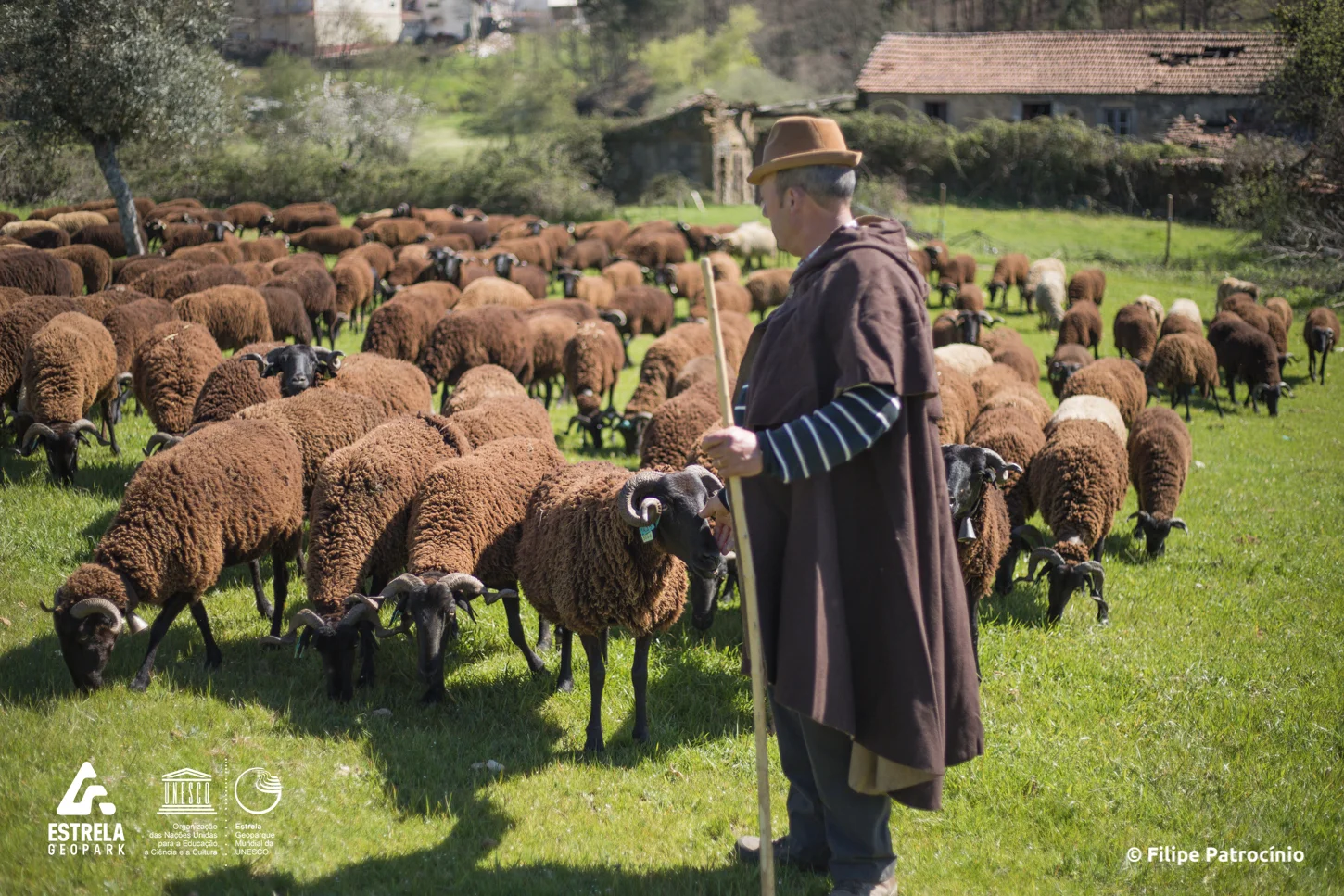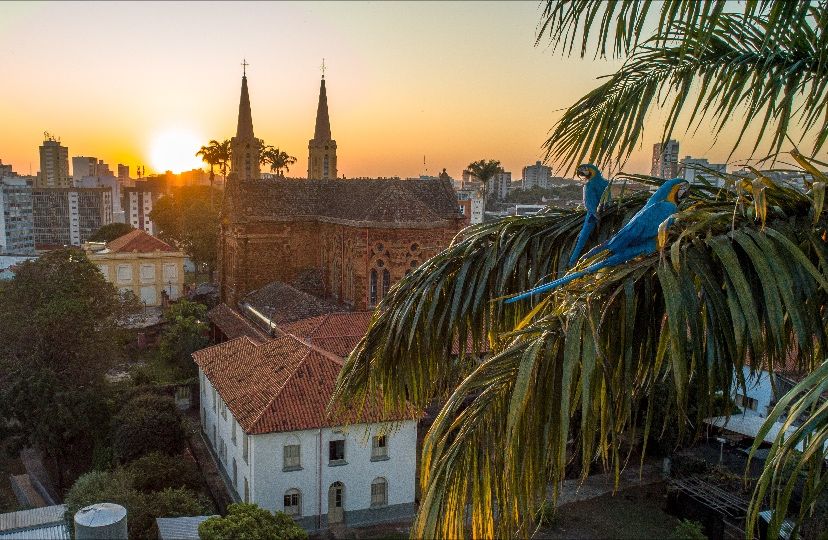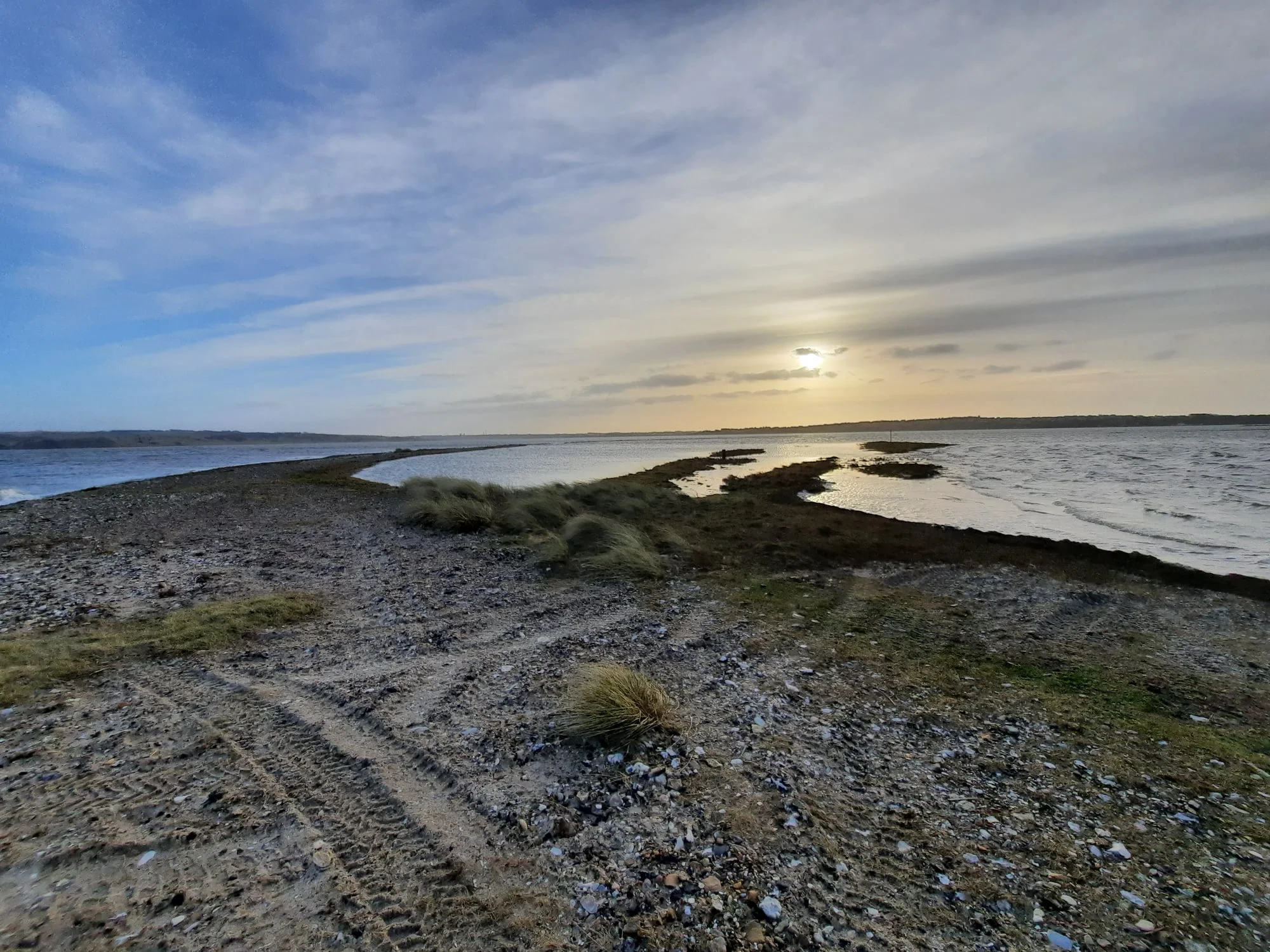Photo: Odd Harald Sletteboe Fossmoen, Magma UGG
Visit and taste geoparks
Geoparks are remote territories characterized by amazing landscapes and fascinating local histories where food has been playing a crucial role for centuries.
Food and Geoparks
The UNESCO Global Geoparks encompasses the soul of places, they are “listening” the local communities, translating their needs and supporting them to keep their traditions alive towards a sustainable future for all. All Geoparks are characterized by geological heritage recognized by the scientific community as having itnternational importance, further more is Geopark´s duties to preserve and to leave to new generation a better, or at least the same, amount of resources to use. Geoparks are all united from the same values and goals.
Since 2013, Magma Geopark has been searching for a solution to better disseminate the local heritage, both geological nad cultural, while supporting local companies and people. Geology and culture are very diverse in each Geopark but all the territories are chacterized by unique culinary traditions which are the naural result of the interraction between cultural -historical, use of the soils and the continuos adaptation to the exiting geomorphological features which shaped the landscape along the geological eras.
We found out that food could have been a good way to exploit knowledge within Geopark inhabitants and visitors concering the geological heritage, understading the importnace of the geoheritage and its diversity iwe are also preserving the knowledge of local communities for the future generations enhancing to a better use of natural resources.

Food plays an important role in each local communities worldwide, through food we are socializing, exchanging ideas and become friends. Food needs has always been one of the main trigger for travelling and for choosing a specific location for human settlement above the others. Communities, while they settled down, always selected the spot with higher chances of survival, and higher food production has always been on top of the priority list. They always took into consideration, consciously or unconsciously, the geomorphological and the geological features of the area where they were planning to live. Food provision and geological heritage have been connected since the beginning of human kind.
Through food the Geoparks have the opportunity to write the story about their local heritage, emphasizing though products the link between the geological bedrock and the soil for human activities, to develop tailored educational activities realted with importance of eating locally and to produce food in the respect for the environment.

Pic, Cheongsong UGG

Arouca Geopark
The Arouca UNESCO Global Geopark is located in northern Portugal and coincides with the area of the Arouca Municipality.
Read more »
Azores Geopark
The Azores UNESCO Global Geopark has a rich geodiversity and an important geological heritage, based on a network of 121 geosites dispersed by the nine islands and the surrounding seafloor, with a total area of 12,884 sq. km (including the 2,324 sq. km of the emerged territory).
Read more »
Bohol Island UNESCO Global Geopark
Located in the heart of the Visayas, Bohol Island is a UNESCO Global Geopark renowned for its extraordinary geological and cultural heritage. With over 150 million years of Earth’s history, Bohol showcases stunning natural wonders formed by tectonic shifts, including the iconic Chocolate Hills, vast karst landscapes, caves, and sinkholes. Unique Marine Heritage: Bohol is […]
Read more »
Cheongsong Geopark
Cheongsong Geopark, located in the Middle East of the Republic of Korea, was designated as a national geopark in April 2014 and a UNESCO Global Geopark in May 2017 due to geodiversity and participation of local residents. The Geopark has an area of 845.71km², and various geological features are observed such as Precambrian metamorphic rocks, […]
Read more »
Estrela Geopark
In the context of the Central Continental Portugal Region, Estrela Geopark includes part or all of the nine municipalities that are structured around Serra da Estrela – a factor that gives them identity and territorial cohesion. The territory of this Geopark reflects a diverse landscape, the result of multiple geological transformations, climatic contrasts recorded, as […]
Read more »
Grevena - Kozani Geopark
The unifying element within the Grevena-Kozani UNESCO Global Geopark is its recognition as one of the global sites of geoheritage relating to the birth of plate tectonic theory, and the expression this tectonic legacy as the source of exceptional landforms and unique ecologic systems. The study of the Geopark Grevena-Kozani area provided an essential key […]
Read more »
Hantangang UNESCO Global Geopark (Republic of Korea)
The Hantangang UNESCO Global Geopark (Republic of Korea) is one new member of the GEOfood movement across UNESCO Global Geoparks! It is located in the central part of the Korean Peninsula. It follows the Hantangang River and covers ca. 1,165.61 km2 . Two provinces (Gangwon-do and Gyeonggi-do) with three local governments (Cheorwon-gun, Pocheon-si, and Yeoncheon-gun are involved. Hantan-River […]
Read more »
Kater Lake UNESCO Global Geopark
The Impact Crater Lake -Lappajärvi UNESCO Global Geopark is a treasure of Western Finland known for its beautiful landscapes, idyllic towns and distinctive villages. Impact Crater Lake – Lappajärvi UNESCO Global Geopark brings together scenery nature sites, charming hiking trails and historic cultural sites, all of which are well worth experiencing when visiting Western Finland. […]
Read more »
Lauhanvuori - Hämeenkangas Geopark
The story of Lauhanvuori - Hämeenkangas UNESCO Global Geopark begins billions of years ago with a mountainous area, which has since turned into the mire rich landscape we see today.
Read more »
Mudeungsan Geopark
Mudeungsan UNESCO Global Geopark is located in the southern part of the Korean peninsula near the city of Gwangju and is centred around Mount Mudeung.
Read more »
Naturtejo Geopark
Naturtejo da Meseta Meridional UNESCO Global Geopark is located in the centre of Portugal, near the border with Spain.
Read more »
Novohrad-Nógrád Geopark
The UNESCO Global Geopark comprises the administrative area of 64 settlements in Hungary (including urban county Salgótarján) and 28 settlements in Slovakia.
Read more »
Rocca di Cerere Geopark
The Geopark area is characterized by its geological diversity. The northern area shows triassic and flyscioid deposits with beautiful quartzarenitic formations. While in the southern area prevails the presence of the gypsum-sulphurous plateau created during Messinian crisis between 5,96-5,33 million years ago.
Read more »
Rokua Geopark Finland
Rokua UNESCO Global Geopark is situated in Northern Finland, about 200 km south of the Arctic Circle between the cities of Oulu and Kajaani.
Read more »
Saimaa UNESCO Global Geopark
Saimaa UNESCO Global Geopark, located in the South Karelia and South Savo provinces, takes the visitor on an adventure into the origin story of the pure lake landscape. Formed from fractured bedrock, Saimaa originated from the ancient sea more than 1 900 million years ago. Legacies of the last Ice Age include esker islands with […]
Read more »
Schelde Delta UNESCO Global Geopark
UNESCO Global Geopark Schelde Delta is a cross-border Geopark in the Netherlands and Belgium covering 5,500 km² with 1.5 million inhabitants, and a a 50-million-year story of subsidence and uplift, sea level rise and fall and climate change. It also shows the alternately dominant and subordinate role of natural processes and the dominant human influence […]
Read more »
Sesia Val Grande Geopark
The Sesia Val Grande UNESCO Global Geopark is located on the north-east of Piemonte Region, NW Italy, and encompasses areas of the Verbano Cusio Ossola (VCO), Biella, Novara and Vercelli Provinces.
Read more »
Terras de Cavaleiros Geopark
The Terras de Cavaleiros UNESCO Global Geopark is located in the northeast of Portugal.
Read more »
The Burren and Cliffs of Moher Geopark
The Burren and Cliffs of Moher Geopark Located on the west coast of Ireland, has an area of 530 km2, it is bounded by Atlantic coastal cliffs (10-200 m high) to the west, the Gort lowlands to the East and by low hilly terrain to the south.
Read more »
The Mourne Gullion Strangford Geopark
The Mourne Gullion Strangford UNESCO Global Geopark is unique as it tells the tale of two oceans through just over 400 million years of geological history. It charts the closure of the Iapetus Ocean and the birth of the North Atlantic Ocean, generating large amounts of molten rock (or magma) both within and on the […]
Read more »
Thuringia Inselsberg – Drei Gleichen Geopark
Although the UNESCO Global Geopark Thuringia Inselsberg – Drei Gleichen is one of the smaller German geoparks with an area of about 700 km2, it is a place where big things happened in the past: here you can explore Pangaea, the supercontinent which existed for around 100 million years. You can also get to know […]
Read more »
Tuscan Mining Geopark
The geological features of the Geopark have resulted from the long and complex geological evolution of southern Tuscany associated mainly with the formation of the local mountain chain (Apennine chain). his territory embraces the area of the Colline Metallifere (Metalliferous Hills), one of most important ore districts of Italy. In this area, there are several […]
Read more »
Uberaba UNESCO Global Geopark
𝘜𝘣𝘦𝘳𝘢𝘣𝘢, 𝘉𝘳𝘢𝘻𝘪𝘭 𝘒𝘯𝘰𝘸𝘯 𝘢𝘴 𝘵𝘩𝘦 “𝘓𝘢𝘯𝘥 𝘰𝘧 𝘵𝘩𝘦 𝘎𝘪𝘢𝘯𝘵𝘴” 𝘣𝘦𝘤𝘢𝘶𝘴𝘦 𝘰𝘧 𝘵𝘩𝘦 𝘳𝘪𝘤𝘩 𝘱𝘢𝘭𝘢𝘦𝘰𝘯𝘵𝘰𝘭𝘰𝘨𝘪𝘤𝘢𝘭 𝘩𝘦𝘳𝘪𝘵𝘢𝘨𝘦 𝘧𝘰𝘶𝘯𝘥 𝘩𝘦𝘳𝘦, 𝘵𝘩𝘪𝘴 𝘯𝘦𝘸 𝘨𝘦𝘰𝘱𝘢𝘳𝘬 𝘪𝘯𝘤𝘭𝘶𝘥𝘦𝘴 𝘵𝘩𝘦 𝘴𝘰𝘶𝘵𝘩-𝘦𝘢𝘴𝘵 𝘉𝘳𝘢𝘻𝘪𝘭𝘪𝘢𝘯 𝘤𝘪𝘵𝘺 𝘰𝘧 𝘜𝘣𝘦𝘳𝘢𝘣𝘢. 𝘐𝘵 𝘤𝘰𝘯𝘵𝘢𝘪𝘯𝘴 𝘪𝘮𝘱𝘳𝘦𝘴𝘴𝘪𝘷𝘦 𝘨𝘦𝘰𝘭𝘰𝘨𝘪𝘤𝘢𝘭 𝘧𝘰𝘳𝘮𝘢𝘵𝘪𝘰𝘯𝘴, 𝘪𝘯𝘤𝘭𝘶𝘥𝘪𝘯𝘨 𝘵𝘩𝘦 𝘚𝘦𝘳𝘳𝘢 𝘥𝘢 𝘎𝘢𝘭𝘨𝘢 𝘢𝘯𝘥 𝘚𝘦𝘳𝘳𝘢 𝘎𝘦𝘳𝘢𝘭 𝘮𝘰𝘶𝘯𝘵𝘢𝘪𝘯 𝘳𝘢𝘯𝘨𝘦𝘴, 𝘸𝘩𝘪𝘤𝘩 𝘸𝘦𝘳𝘦 𝘧𝘰𝘳𝘮𝘦𝘥 𝘣𝘺 𝘣𝘢𝘴𝘢𝘭𝘵 𝘧𝘭𝘰𝘸𝘴 𝘢𝘯𝘥 𝘵𝘦𝘭𝘭 𝘵𝘩𝘦 𝘴𝘵𝘰𝘳𝘺 𝘰𝘧 𝘢𝘯𝘤𝘪𝘦𝘯𝘵 𝘷𝘰𝘭𝘤𝘢𝘯𝘪𝘤 […]
Read more »
Vestjylland UNESCO Global Geopark
Geopark West Jutland is located in the Central Denmark Region and includes the three municipalities Lemvig, Struer and Holstebro, a part of the Limfjord and extends about 50 km offshore into the North Sea to also include part of the Jutland Reef. The Geopark has a total area of 4,759 km2. Of this, the land […]
Read more »
Vis Archipelago Geopark
The Vis Archipelago UNESCO Global Geopark is located off the coast of Croatia, formed by some of the oldest rock in the Adriatic Sea
Read more »

























